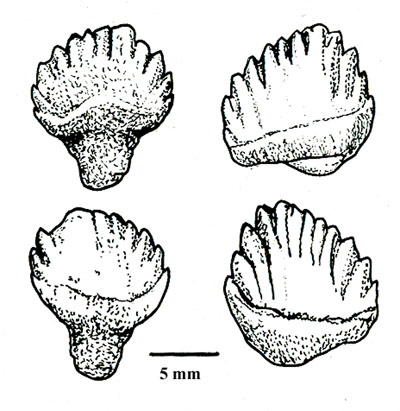
Species: coombsi FORD & KIRKLAND, 2001
Etymology: In honor of Walter P. Coombs, Jr., for his groundbreaking work on
ankylosaurs and his yeas of research, which have inspired many an enthusiast
as well as professional paleontologist.
Holotype: SDNHM 33909
Locality: SDNHM Locality 3392, from a Koll construction site (found while digging a sewer pipe line) near El Camino Real in Carlsbad, College Boulevard between El Camino Real and Palomar Airport Road, Northwest of Palomar-McCellan Airport, Letterbox Canyon, City of Carlsbad, approximately 117°15’W, 33°9’N, San Diego County, California.
Horizon: Point Loma Formation, Rosario Group.
Biostratigraphy: Pachydiscus (N.) catarinae zone.
Age: Late Campanian Stage, Senonian Subepoch, Gulf Epoch, Late Cretaceous.
Material: Partial skeleton that includes; 8 teeth, fragmentary scapulae, partial humeri, partial ulnae, possible fragment of right (?) radius, ilia, partial left and possible fragment of right ischium, femora, tibiae, fibulae, 4 or 5 partial vertebrae, neural arches of the sacrum, fragmentary ribs, partial armor over pelvic girdles in situ, at least 60 detached armor plates, numerous indeterminate fragments, most imbedded in matrix and many of which are probably broken armor plates or ribs.
Note: Found in marine sediments.
Note: Paleopathology, possible scutes with pits, and a pathologic ulna?
Note: Squalicorax haupi teeth were found in immediate association.


Pathologic ulna and radius?
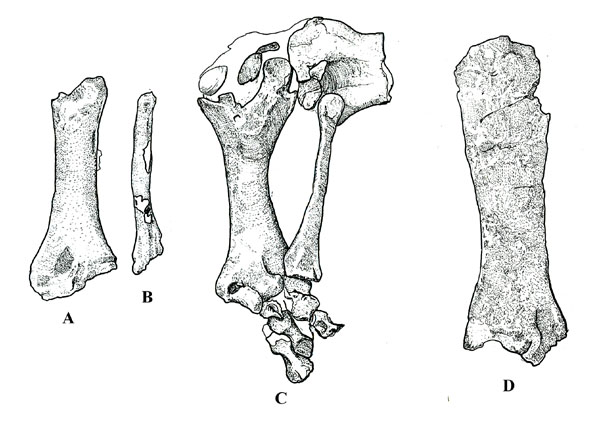
A) Right tibia; B) Right fibula; C) Left distal femur, tibia, fibula, and metatarsals; D) Right femur.

Top) Fragmentary right humeurs and portion of scapula; Bottom) Left humerus and portion of left ulna?
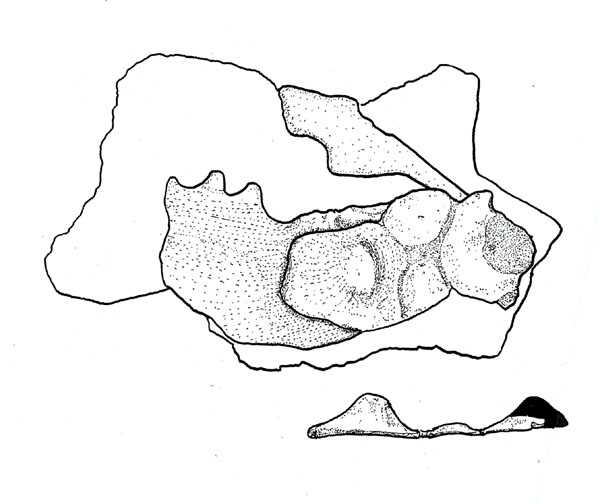
Possible section of cervical ring?
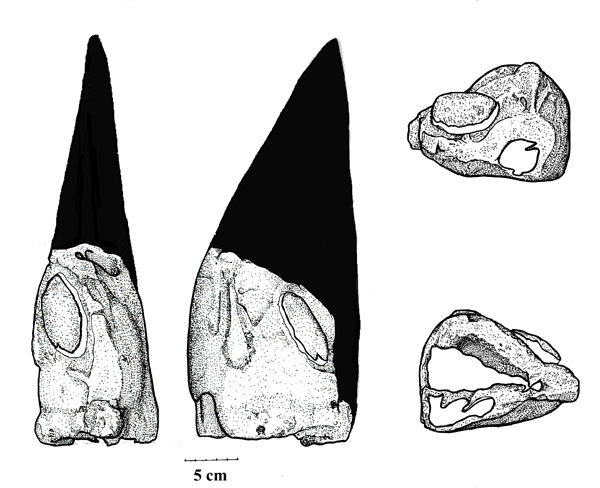
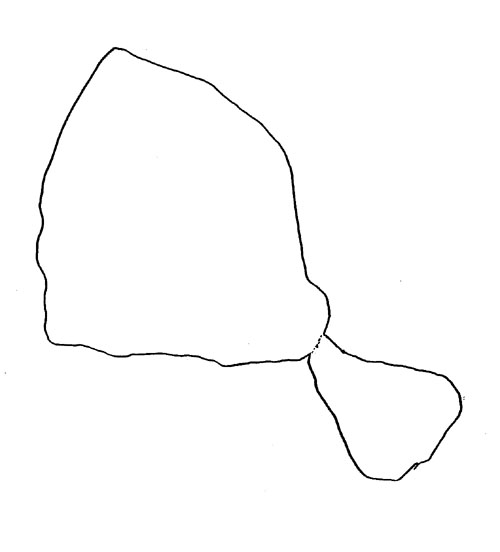
Crossection showing position of the large scute and a smaller scute.
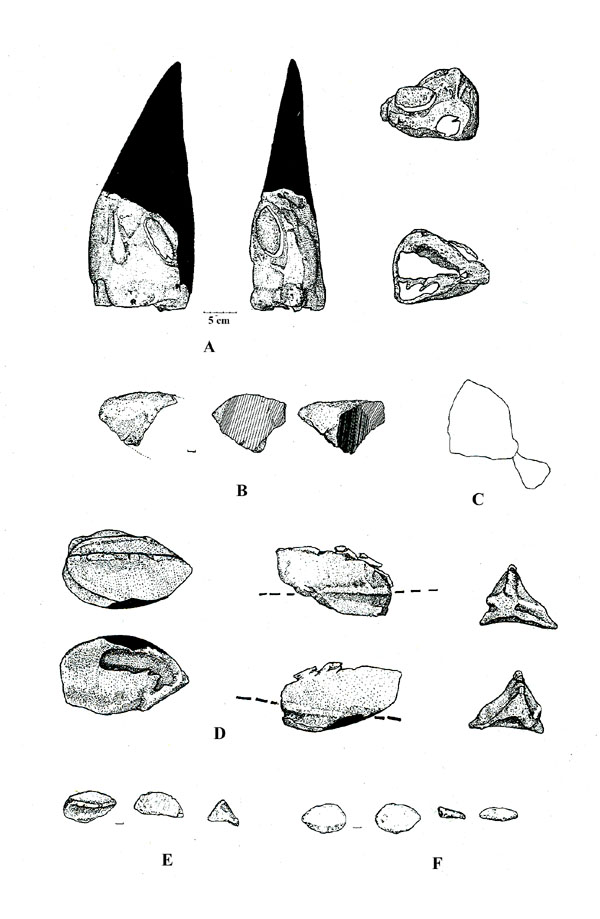
Scutes, A) Large pectoral spike in dorsal, lateral, anterior and posterior view; B) Broken scute immediately posterior to large scute in dorsal, posterior and lateral view; C) Illustration showing these two scutes in natural articulation; D) Cervical pump-tent shaped scute in dorsal, ventral and lateral view; E) Small pump tent scute in dorsal, lateral and anterior view; F) Small flat scute in dorsal, ventral, lateral and anterior view.
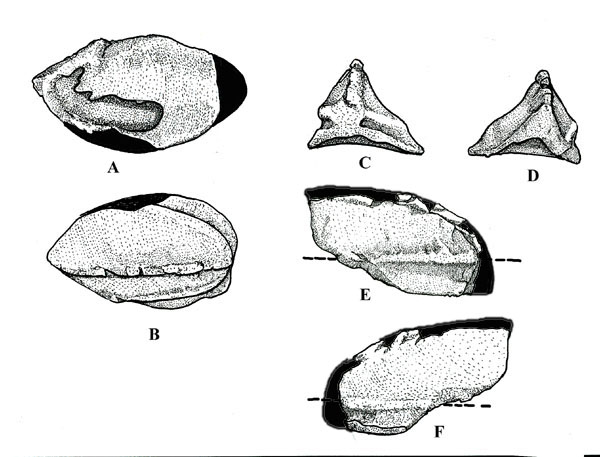
Close up on cervical pump-tent scute.
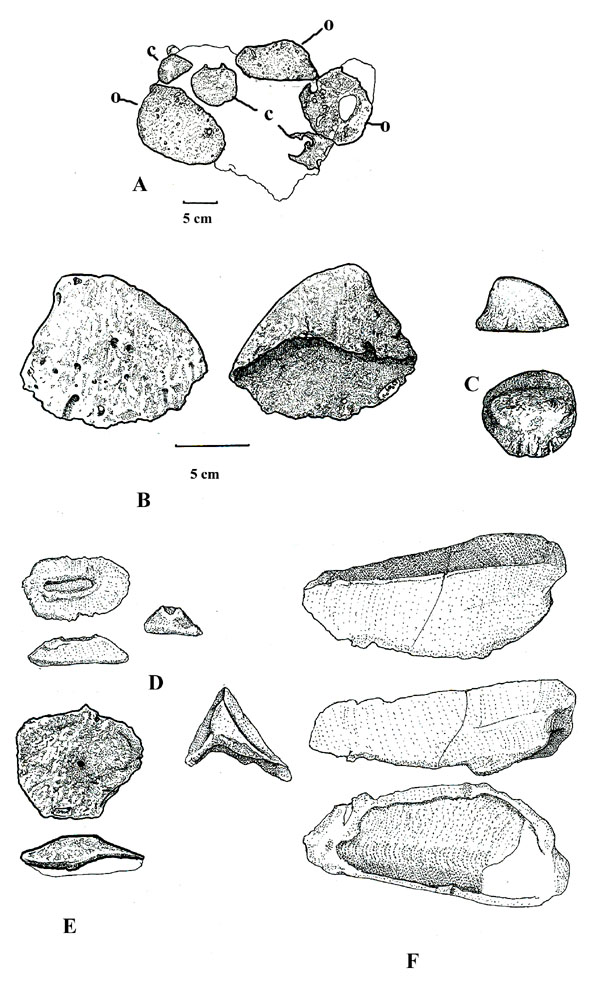
Scutes, A) Caudal scutes and vertebrae; B) Caudal scute in dorsal and ventral view; C) Capshaped scute in lateral and dorsal view; D) Oblong scute in dorsal, lateral, an danterior views; E) Median pelvic scute in dorsal and lateral view; F) Pump-tent scute in dorsal, lateral, ventral, and anterior view.

Pelvic region.

Skeleton.
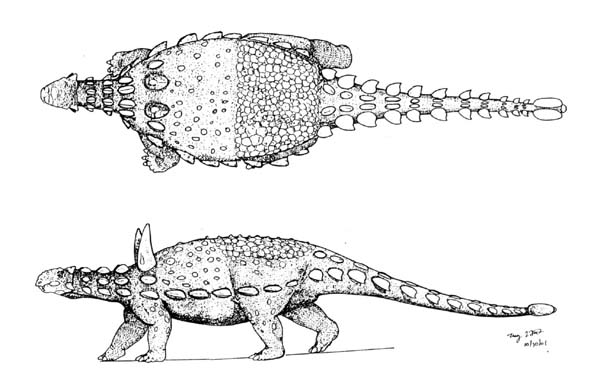
Reconstruction of Aletopelta.